20 Best Hybrid Mobile App Development Frameworks
Looking for the best hybrid app framework? Explore the top 20 options to build high-performance, cross-platform mobile apps efficiently!
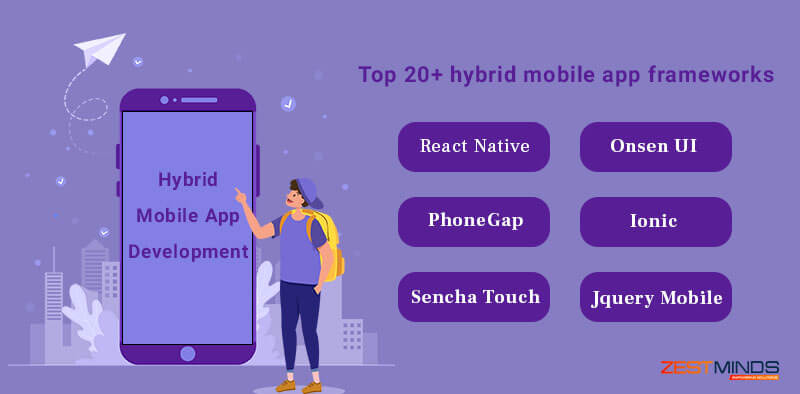
When looking for a solution that aids your mobile app development process, you might be confused with so many options available in the software world. So, where should you start exactly? Should you stick to the native app development frameworks or go for something new? The hybrid mobile app development frameworks have been quite the craze with the start of 2020.
In simple terms, the word hybrid suggests that these frameworks are a perfect blend of the web as well as native solutions. Here the application core is created with web technologies such as CSS, HTML, or JavaScript. However, the final encapsulation is performed with the use of native applications. The market is packed with options, but which one should you choose for your mobile app development needs.
Here is a thorough list of some of the best and most popular hybrid mobile app development frameworks.
React Native:

The prime purpose of this particular framework is the development of native applications atop the hybrid applications designed to run on the web-view. However, the coding part will be executed via the use of JavaScript and React. If you are a beginner, this framework might be a bit complicated for you, but the active community it flaunts can help clear out confusions at the earliest.
Pros:
-
Multiple components for speeding up the development process
-
Provision for code base copying between Android and iOS platforms
-
Provision for hot deployment with no need for changes to be saved
-
Easy bug identification
Cons:
-
A gap in the navigation components form
-
Scope for improvement within hardware areas
Xamarin
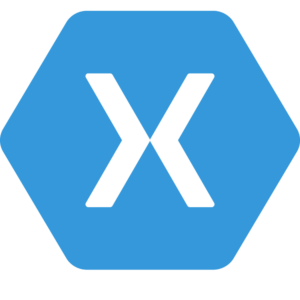
Of recent, Xamarin has acquired a lot of popularity among the developer community. It functions as one of the best frameworks for mobile app development, which is being used by several organizations. The framework flaunts 1.4 Million+ developers in its community. The Xamarin framework abides by the Write Once – Run Anytime or WORA principle. It is popular for creating business-based mobile applications that come with a native feel and look.
Pros:
-
Supported by Microsoft
-
70% or more of its code is reusable between Android and iOS
-
Easy test runs
-
Same performance level as native applications
-
It provides platform-specific features.
Cons:
-
High price for a business license
-
Tough integration
-
Support only available for specific technical components within its library
Onsen UI

Better described as a framework that is of the open-source kind, the Onsen UI works perfectly without the need for Angular JS. Further, it flaunts proper documentation designed to explain all the details of application structures. This easy-to-use framework makes it easy to pull-off that native app look.
Pros:
-
Ease of use with inspirations derived from the web components
-
Compatible with AngularJS and jQuery
-
Free and Open-Source Platform
-
Multiple features such as Theme Roller, Font Awesome, Screen Transition, etc
Cons:
-
Template upgrade is time-consuming
-
Lacks templates on repositories such as GitHub
PhoneGap

Another open-source framework, PhoneGap, can easily be defined as the simplest framework of cross-platform nature. Developers can easily create applications with the use of Web APIs, which adds in an app shell that is wrapper native. Further, PhoneGap provides its own cloud service termed “Build,” which can compile apps with no SDK instalment required.
Pros:
-
Individuals with beginner’s experience with CSS, JavaScript, and HTML5 can easily understand PhoneGap
-
Compatible with Android, iOS, and Windows 7
-
Skipping option for multiplatform validation with focus on UI
Cons:
-
Lack of UI widgets within the framework
-
Average performance
Ionic

Ionic is one of the preferred choices when it comes to the best hybrid mobile app development frameworks of 2020. The CSS sections within this framework can easily render a native look for the applications. One can use Ionic to its complete potential when paired with the Angular JS. You also get access to multiple features such as integrated emulators and app packages based on Cordova.
Pros:
-
Development needed just once with cross-platform support
-
Robust and rich applications can be created with the use of Ionic+AngularJS combination
-
Easily maintained coding with quicker development
Cons:
-
App performance lacks when compared to applications created for specific environments
-
Pairing with AngularJS might create a skill gap for JavaScript developers
-
A complex variant of navigation within the app
Framework7:
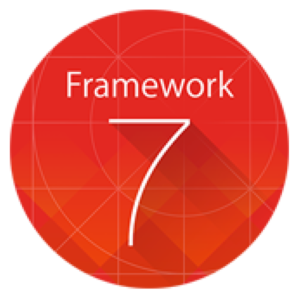
Just like other frameworks in this list, the Framework7 is one of the highly independent and stable options for developers. It has no dependency on Angular JS or Reacts. Even after this, you can get access to native-looking applications with fine style and nice animations. The tool also needs JavaScript, CSS, and HTML knowledge to help with active app development.
Pros:
-
Easy customization options
-
Creates native applications with no external dependencies on Angular JS or React
-
Provides several elements and UI widgets for feature-rich applications
Cons:
-
For package emulation, Framework7 needs to be paired along with Cordova or PhoneGap
-
F7 MVC Framework needed
-
Incompatibility with certain mobile platforms
Intel XDK:
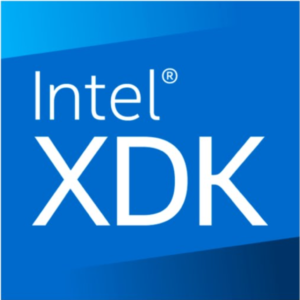
Up next in this list is a cross-platform application development framework named Intel XDK. The framework helps provide different services that range from content plugins to web services. Intel XDK can help developers work on tasks that range from development all the way to emulation, debugging or testing.
Pros:
-
Adds-in multiple features that are developer-friendly
-
The latest release extends support for Windows, iOS, as well as Android
-
Tools present within allow live preview through different development stages of the app
Cons:
-
Drag and drop feature comes with unnecessary coding
Appcelerator Titanium:

In order to start the use of the Appcelerator Titanium, you need to download its Titanium Studio. The Appcelerator Titanium SDK comes with some of the best and rapid mobile application development features. Apart from that, mobile applications created with the Alloy flaunt ease-of-use while reducing the overall development time significantly. The Appcelerator combined code is the perfect combo of JavaScript and native to help improve performance for the resulting application.
Pros:
-
Mixed environment for app development with tools such as PhoneGap or Xamarin
-
Mobile applications created in sync with Alloy provides reuse across platforms and applications
Cons:
-
Applications written in JavaScript would need to use the custom XML and Appcelerator’s API for native feature support
-
Even though it is termed as a framework with cross-platform features, it doesn’t include HTML or CSS with itself
Mobile Angular UI:

The Mobile Angular UI is a framework created with AngularJS and Bootstrap for comfortable use. With the use of this framework, one can make the best use of Bootstrap 3 for the creation of high-quality mobile apps based on HTML5. In order to create feature-packed mobile applications, you need to pack in some of the AngularJS directives.
Pros:
-
Best in terms of the mobile experience for a framework that comes with overthrow.JS and fastclick.JS
-
Free and Open-Source Application Creation Framework
Cons:
-
Bootstrap 3 internal dependencies that might result in a lag
Sencha Touch:

If you are looking for an enterprise-grade mobile app development framework, the Sencha Touch is a perfect fit for your needs. Used for creating cross-platform based web applications with help from JavaScript and HTML5, it serves as a premium choice with regards to mobile application development in a commercial space. It is backed by ExtJS, which is a popular and powerful JavaScript-based framework. It helps create applications that render high-performance with a native app experience.
Pros:
-
With a native look paired with cross-platform support, Sencha ranks higher than its competitors
-
Ready-to-use widgets
-
Premium choice when it comes to application development for enterprises
Cons:
-
Single contender for enterprise-grade app development
-
A higher price tag for development tools
Kendo UI

Another popular framework in the list is the Kendo UI, which also functions as an HTML5 based framework, which is used widely for mobile app development. The framework is powered with Telerik and has a strong jQuery dependency. It also has close to 70+ app widgets based on jQuery. Further, the platform has the potential to be blended with Bootstrap UI and AngularJS frameworks.
Pros:
-
It is easy to master
-
It uses a free open source framework
Cons:
-
Limited feature set
-
Technical support isn’t as advanced as other open-source platforms
-
Commercial-use widgets need a commercial license
jQuery Mobile:

jQuery is a framework for mobile app development that strays away from the native look protocol to render a rather different approach for generic applications that perform consistently. The platforms covered by jQuery include Windows, Symbian, Blackberry, and other non-generic options. It works on the BYOD ideology or, in simple terms, the Bring Your Own Device ideology. It caters to support different types of operating systems. Further, the tool enforces a belief that every developer doesn’t need to be an Android or iOS fan.
Pros:
-
Stable environment for developers to work on
-
ThemeRoller provides access to theme creation with no need for additional codes
-
Screen and size responsive apps
Cons:
-
jQuery works perfectly for simple designs but could have issues with custom design
-
Custom HTML-based themes might have several issues related to CSS
-
.NET interaction can be troublesome, especially with panel updates
Mobincube:

If you are seeking for a framework that allows easy-to-create applications for mobile, Mobincube should be your go-to option. This framework allows for the creation of native mobile apps for platforms such as Windows, iOS, or Android. It is super easy to use, especially when it comes to building the application core.
Pros:
-
Provision for creation of mobile stores that can enhance sales
-
Provides amazing 3rd party integration options within the final application
-
Unlimited storage with compatibility for multiple platforms
Cons:
-
Limitations with push notifications
-
Analytics limitations
LongRange

LongRange is another popular framework for native development of mobile applications that can be concocted with components such as form views, commands, and navigation tabs. This framework is based upon two different principles, which include faster mobile application development and shorter process for maintenance. LongRange, when combined with CoBoL, CL, or RPG, can help develop mobile applications quickly.
Pros:
-
Development possible with beginner-level programming expertise
-
Ability to create native applications with the use of CL, RPG, or DDS
-
Cater's long-term reliability with faster operations for native apps
-
HTML, CSS, or JavaScript programming language not required for app development
Cons:
-
Higher dependency on existing tools to cater to better applications
QT
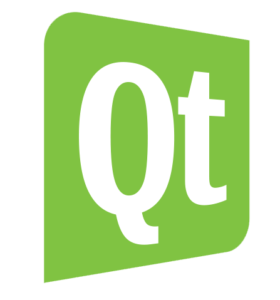
If you are looking for a design, development, as well as deployment process for cost-effective mobile applications, QT is what you are looking for. This particular cross-application framework can be used comfortably by the developers for the delivery of the best user-experience for different types of handheld devices. This solution enables you a chance to connect any possible gaps for the deployment of applications over platforms such as iOS, Android, or Windows.
Pros:
-
Provides amazing workarounds for the buggy servers for SSL
-
Supports dual-mode and IPv6 networks
-
Cater's support for Private keys
Cons:
-
Usage of the metaobject compiler can add a bit of complexity
-
Team QT is refraining from the use of C++ which might not be welcomed by most customers
Alpha Anywhere:

If you are seeking the quickest way to develop a mobile application, Alpha Anywhere should be your choice of the day. With its low code integration property, this particular app can help you create web and mobile applications that are offline-capable. It serves as your ultimate destination for SaaS development, web/mobile app development, or desktop app development.
Pros:
-
Data encryption facility with SSL and HMAC support
-
Presence of pre-built application samples to ensure cross verification
-
Comprehensive access to backend data
Cons:
-
Limited to zero technical support for project obstacles
-
No feature for drag and drop option
17-NativeScript:
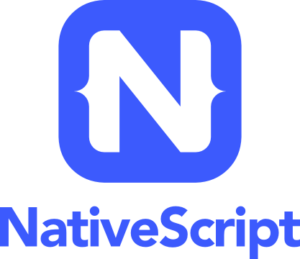
Next on our list is the NativeScript, which is a framework of the open-source kind. This particular framework can be opted for the creation of pure form mobile applications by integrating TypeScript, AngularJS, as well as JavaScript. It also provides wonderful features for deploying and writing mobile applications in Android or iOS operating systems.
Pros:
-
Enables acceleration of learning curve for native app development
-
Truly native applications can be created with the use of web skills such as CSS and AngularJS
Cons:
-
Lack of plug-ins
-
Larger application size when compared with Ionic2 or React Native apps
-
A longer learning curve for UI components
Firebase:

Yet another popular name in our list is the Firebase, which is a mobile app development framework that supports the creation of iOSX, iOS, and Android platforms. It can cut down the overall time for the development phase. It also ensures the integration of data servers and storage.
Pros:
-
Cloud service doesn’t need additional setup
-
Data storage assured with 2048-bit SSL data transfer encryption
-
Provides amazing integration of AngularJS
Cons:
-
JSON storage format makes it hard for normal migration of SQL
-
No facility for on-premise app installation
Swiftic:
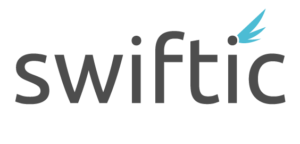
Swiftic is another popular dedicated app development framework for iPhone OS. The tool caters options such as easy navigation and user-friendly interface. It allows the developers a chance to create applications based upon the business requirements. Swiftic has a list of features that tends to be useful and easy on the eyes.
Pros:
-
Provision for creation of custom applications and publishing the same on top-ranking stores
-
Keeping in contact with customers is very easy
-
Grab more customers with push notifications
Cons:
-
Supports only iOS platform
-
Only certain application types can be created from the Swiftic tool
VuForia:

Now, the VuForia is a top-notch framework in our list that also provides development kit with AR r Augmented Reality features. It enables the use of certain Computer Vision tech that recognizes as well as tracks the images in a 3-dimensional world. This platform doesn’t just ensure a reliable and robust experience but also caters to a range of environments.
Pros:
-
VuForia houses the ability to track and recognize a large variety of objects
-
Extends support for most of the high-end devices
-
Houses ability for creation of high-quality AR experience
-
Allows creation of virtual buttons
Cons:
-
Skill gap can make it difficult to master
-
Aligns more towards the AR world as opposed to hybrid mobile app
Conclusion
So, whether you are a developer seeking access to high-end frameworks for mobile app development or a business owner in need of the best features for a mobile application, these top-ranking frameworks will help you create some of the best applications that are user-friendly, customer-centric, and in line with the modern-day requirements.

Shivam Sharma
About the Author
With over 13 years of experience in software development, I am the Founder, Director, and CTO of Zestminds, an IT agency specializing in custom software solutions, AI innovation, and digital transformation. I lead a team of skilled engineers, helping businesses streamline processes, optimize performance, and achieve growth through scalable web and mobile applications, AI integration, and automation.
Stay Ahead with Expert Insights & Trends
Explore industry trends, expert analysis, and actionable strategies to drive success in AI, software development, and digital transformation.

January 21, 2020
20 Best Hybrid Mobile App Development Frameworks
Stay Ahead with Expert Insights & Trends
Explore industry trends, expert analysis, and actionable strategies to drive success in AI, software development, and digital transformation.

January 21, 2020

